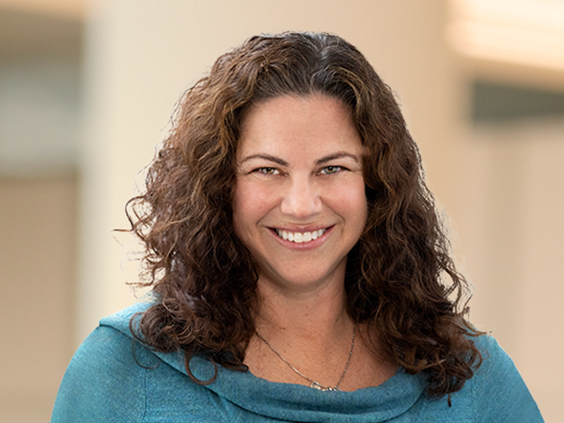Key takeaways for borrowers
- Things to consider before applying to college
- Things to consider when you’re ready to apply to college
- Things to consider before getting a student loan
- Understanding the different types of student loans
- Know how to repay your student loan
- Be intentional about your spending to repay loans efficiently
Did you know that student loan debt is now the second highest consumer debt category after mortgages? Maybe that’s no wonder, since there were more than 19 million enrolled undergraduate students in the fall of 2024.
In fact, in 2024, 42.7 million Americans held federal student loan debt, and 20% of all American adults with undergraduate degrees have outstanding student debt. Don’t let student debt isolate you from seeking financial advice. Just as most people can’t buy a home without a mortgage, most people can’t go to college without borrowing.

Now is the time to think not only about your funding options, but also why you’re going to school. Weigh your options, and make a plan today so when you graduate, you’ll know:
- How much your education is going to cost
- How long you’ll have to repay any loans that you take out
- If this works relative to your potential income
- If your future career path could potentially qualify you for a loan forgiveness program
What’s your income going to be? If you’re making $50,000 a year, after taxes that becomes $30,000. Then divide that by 12, and if you’re already paying $500 in student loan payments, challenge yourself to create a budget to enable you to live on $2,000 a month.
Here are tips on how to get a student loan and more for students and their parents.
Things to consider before applying to college
Start thinking about the type of school you’re hoping to attend, including public and private colleges, universities, and career schools. Look at all the angles for getting accepted and paying for those schools, including the following:

- Residency options. If you want to go to a public school in another state, find out how to establish residency first. In some cases, it might be 6 to 12 consecutive months before the first day of school. Within state systems, find out if applying to your nearest university will give you priority.
- Reciprocity programs. For example, Western Undergraduate Exchange institutions allow residents of certain states to apply to one of more than 160 participating public schools in 16 Western states and pay no more than 150% of that institution’s resident tuition rate. The New England, Southern, and Midwestern regions have similar programs.
- Community college to university pathway. Some states have a formal process where the student attends a less expensive community college for two years and meets certain requirements and is then guaranteed a transfer to a participating 4-year state university.
- Estimate your total costs. All colleges and universities must have a net price calculator on their website that allows current and prospective students to estimate the cost of attendance. In addition, you can use the Federal Student Aid Estimator before filling out the Free Application for Federal Student Aid (FAFSA) form to see an early estimate of how much federal student aid you may be eligible for.
Read more about getting ready for college.
For parents
Think of all your saving and investing for education ideas upfront, even before your child applies to college and subsequently financial aid. Compare plans to see what could work for you.
- 529 Plans.1 These accounts are typically going to be one of your more efficient methods to save for educational expenses from kindergarten through college and beyond. Weigh the pros and cons of prepaid tuition 529 plans and precommitment plans, such as those offered by Florida and other states. While you may be able to lock in the cost of attending college in today’s dollars, your student may find their choices too limiting. Explore 529 Savings Plans offered by Wells Fargo Advisors.
- Uniform Transfers to Minors Act (UTMA) and UGMA (Uniform Gifts to Minors Act). These are also known as custodial accounts. UTMA and UGMA accounts are taxable investment accounts set up to benefit a minor but are controlled by a parent or guardian until the minor is legally considered an adult. They can be a little more flexible than a 529, because the funds don’t need to be reserved for just education, but not as efficient. If you’re going to have money left over after college is paid for or you want to use for other purposes, a custodial account could be a better vehicle for you.
- Education Savings Account. You can invest in the future of a child — tax-deferred and federal tax-free for qualified distributions2 for elementary, secondary, and higher education expenses.
Pay direct. A grandparent or any other adult can pay tuition directly to your child’s education institution. By doing this, they’ve effectively transferred estate money without using any of their annual gift exclusion or lifetime estate or gift tax exclusions — and the IRS doesn’t even want to know about it. You don’t even have to document it. Direct pay is one of your most efficient options.
This is a great time to call your financial advisor and talk it through.
Things to consider when you’re ready to apply to college
First, take a minute to understand how financial aid works.
Fill out the FAFSA and the CSS Profile. The Free Application for Federal Student Aid (FAFSA) form is used to apply for federal student aid, such as grants, work-study, and loans. In addition, most states and colleges use information from the FAFSA form to award nonfederal aid.
About 200 colleges, universities, and scholarship programs use the CSS Profile as part of their financial aid process for some or all of their financial aid applicants.
Many colleges and universities use both FAFSA and CSS Profile data to determine your federal aid eligibility and award their own aid, so high school seniors should plan on submitting both in October. Confirm the dates on each school’s website.
Determine when and how you will apply to schools. For example, early decision applications are binding, meaning if you are accepted, you will need to commit and withdraw any other applications. One of the advantages of applying for early decision is that you might have a higher chance of receiving merit-based scholarships, because colleges want to reward and attract students who demonstrate a strong interest and commitment. Students who apply early decision receive offers of admission and financial aid simultaneously and will not be able to compare financial aid offers from other colleges. For students who absolutely need financial aid, applying early may be a risky option. If you are applying early decision, be aware that you are essentially giving up the ability to compare financial aid offers from other schools or negotiate awards.
For parents
Now is a great time to start a conversation with your kids about how college costs will be handled. Instead of making promises like “we’ll cover everything,” it can be more helpful — and honest — to frame education as a shared family value. For example, saying “education is really important to us” sets the tone for a thoughtful discussion about priorities and responsibilities. “Feel empowered to share your own higher education funding journey with your kids,” Emily Irwin, head of Advice center recommends. You can also discuss other factors that may be important to your family, such as public versus private institutions, undergraduate versus graduate tuition assistance, and even grade expectations.
Why does this matter? Because higher education costs can add up quickly. A 4-year private school education might turn into five or six years or extend into graduate school, and if you have more than one child, the total expense could rival what you need for a secure retirement.
While it is natural to want to help, think twice before dipping into your own retirement savings. Students have access to options like federal loans, work-study programs, and part-time jobs during breaks to help cover costs. These opportunities also build resilience, independence, and real-world experience that can strengthen their future job prospects.
Things to consider before getting a student loan
Your college acceptance letter will also come with an award letter listing the components of your financial aid package. This could include a mix of options, including scholarships, grants, Federal Work Study, and Federal Subsidized or Unsubsidized Loans. Now determine if you need additional funding.
If the financial aid you receive from your award letter doesn’t cover your total college costs and other funding sources — like savings accounts, 529 plans, income, etc. — aren’t enough, you may want to explore additional federal and private financing options.
One of those options is a tuition payment plan, available through colleges to help students pay tuition in installments instead of one lump sum at the start of each semester. This is also beneficial because it allows you to pay your tuition monthly, typically interest-free. Another option includes Federal Direct PLUS Loans, which are credit-based loans offered by the federal government.
You may also consider private student loans or alternative student loans, which are credit-based loans provided by banks or other lenders.
Read more at College Steps.
Understanding the different types of student loans
Public loans. Private loans. It can get complicated. You need to be very thoughtful of what path you want to go down.
- Federal loans. These offer students a big benefit in that there are ways to defer if you can’t pay them. And the rates are standardized.
- Private loans. Make sure you understand the specifics of the loans, including the limits of what you can take out, and if the rates are standardized or variable. For the latter, as rates increase, so do your payments.
Know how to repay your student loan
Confirm the details of your repayment plan. Check that your contact information is up to date. Be sure you know the minimum amount and due date of the first payment. Setting up automatic payments may also save you interest (.25%!).
To know where you stand with your loan, make sure you understand each piece of information on your statement: original principal amount, interest rate, balance, annual percentage rate (APR), and so on. Read more about these details.

Here’s a list of common questions to ask your provider:
- What happens if a payment is missed?
- How do extra payments reduce overall debt?
- What are grace periods and when do they apply?
- When does interest start to accrue?
If you can’t make your student loan payments
If you find yourself in a cash crunch, for example due to a job loss or illness, you might be able to apply for forbearance.
Forbearance isn’t forgiveness — you’ll ultimately have to pay the loan in full — but it may allow you to postpone your payments and ease your situation. Federal loans offer deferment options for certain circumstances, such as military service. Reach out to your student loan provider to explain your situation or the U.S. Department of Education to learn more.
Read more about what to do if you missed your student loan payment.
Be intentional about your spending to repay loans efficiently
Outline and understand where your money is going and what it’s going toward. Determine things that are truly essential — like housing, groceries, utilities, and insurance — versus discretionary items that you can survive without. Streaming services, entertainment, vacations, and other nonessential items may represent areas for you to focus more deliberately on your spending and allocate money to your student loan repayment. It’s not about stopping your spending; it’s about making more of your money where you’re spending it.
As an example, you can optimize rewards programs, use coupons, and shop for discounted items. If you have the opportunity, consider adding hours as part of your job or a side hustle. So, while you may opt for a picnic instead of a night on the town, know that many others are making similar choices — and taking advantage of available options and programs — to help themselves stay on track. In other words, be open with roommates or loved ones about the need to collaborate on the trade-offs you may need to make.
Keep an eye out for scammers. If you’re contacted by a company saying they will help you get loan discharge, forgiveness, cancellation, or debt relief for a fee, it’s a scam. You never have to pay for help with your federal student aid. Work only with your loan servicers and never give your personal information or account password to anyone. Learn the signs of a student loan scam.






